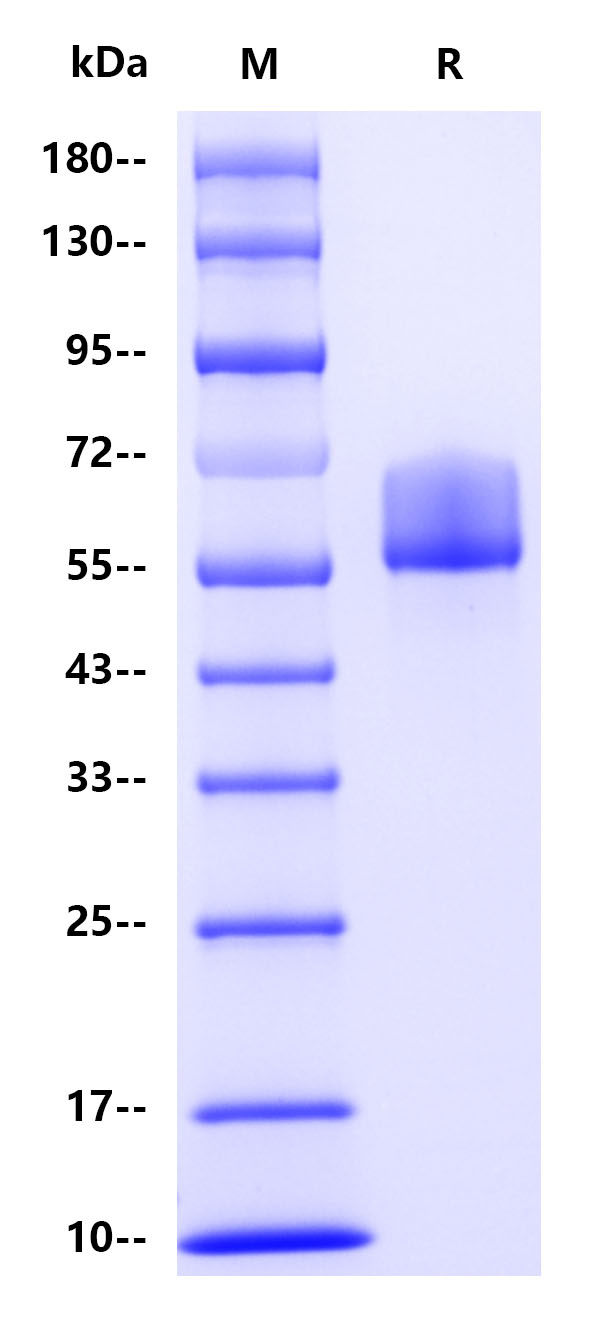Protein sequence(P00738, Val19-Gln160&Ile162-Asn406, with C-10*His)
VDSGNDVTDIADDGCPKPPEIAHGYVEHSVRYQCKNYYKLRTEGDGVYTLNDKKQWINKAVGDKLPECEADDGCPKPPEIAHGYVEHSVRYQCKNYYKLRTEGDGVYTLNNEKQWINKAVGDKLPECEAVCGKPKNPANPVQILGGHLDAKGSFPWQAKMVSHHNLTTGATLINEQWLLTTAKNLFLNHSENATAKDIAPTLTLYVGKKQLVEIEKVVLHPNYSQVDIGLIKLKQKVSVNERVMPICLPSKDYAEVGRVGYVSGWGRNANFKFTDHLKYVMLPVADQDQCIRHYEGSTVPEKKTPKSPVGVQPILNEHTFCAGMSKYQEDTCYGDAGSAFAVHDLEEDTWYATGILSFDKSCAVAEYGVYVKVTSIQDWVQKTIAENGGGGSHHHHHHHHHH
>95% by SDS-PAGE
· 12 months from date of receipt, -20 to -70 °C as supplied.
· 6 months, -20 to -70 °C under sterile conditions after reconstitution.
· 1 week, 2 to 8 °C under sterile conditions after reconstitution.
· Please avoid repeated freeze-thaw cycles.
Haptoglobin (abbreviated as Hp) is the protein that in humans is encoded by the HP gene. In blood plasma, haptoglobin binds with high affinity to free hemoglobin released from erythrocytes, and thereby inhibits its deleterious oxidative activity. Compared to Hp, hemopexin binds to free heme. The haptoglobin-hemoglobin complex will then be removed by the reticuloendothelial system (mostly the spleen).Haptoglobin is an acute-phase protein, its concentration in plasma changes in pathology, and the test for its concentration is part of normal clinical practice. Haptoglobin is a conservative protein synthesized mainly in the liver and lungs and is the subject of research as a potential biomarker of many diseases, including various forms of malignant neoplasms.
Immobilized Human Haptoglobin, His tag at 0.2 μg/mL (50 μL/well) can bind Haptoglobin Recombinant Rabbit mAb (SDT-339-43) (S0B3126) with EC50 of 4.725-5.364 ng/mL.

2μg (R: reducing conditions)